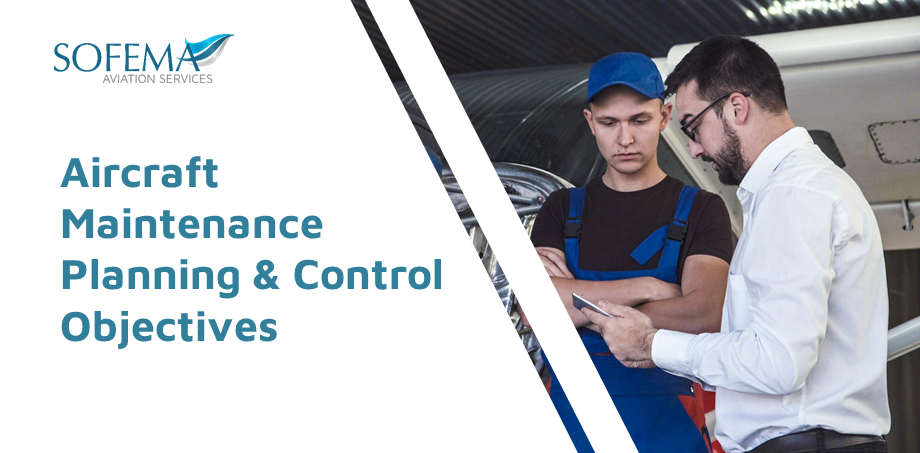Sofema Aviation Services (SAS) www.sassofia.com considers the primary elements of both planning & control within the operators’ Maintenance Control.
Introduction
We must ensure that Aviation Safety is afforded the highest priority and this means carefully managing the airworthiness of the aircraft.
We should all accept that safety should never be compromised and in respect of aircraft maintenance, this is achieved through adhering to integrated procedures and policies, as well as ensuring controlled and approved documentation is available and used at all times.
Consider a Number of our Primary Objectives within An Aviation Maintenance Control Centre (MCC)
- To Ensure the Airworthiness of the Aircraft
- To Maximize the Availability
- Scheduling of Short-Term Maintenance Activities
- Ensuring availability of Maintenance Support Facilities when required
- Co-ordinate with the AMO (Maintenance Provider to ensure acceptable maintenance Turn Around times)
Interface between OCC and MCC
To be effective MCC must function in coordination with Operational Control Centre (OCC). The Commercial Operation and Flying Plan belong to Ops and it is the responsibility of MCC to do everything possible to ensure the availability of all required aircraft.
- MCC becomes the key link between flight operations and engineering sitting in the middle and liaising with both groups to support daily flight operations.
- Responsible for coordinating with OCC, GRD OPS, and AMO Production Planning to coordinating aircraft maintenance so that all planned flight schedules can be achieved
- Additionally MCC assumes the responsibility for Maximizing the Operational Availability of the aircraft through
o Close monitoring and scheduling of all Maintenance Requirements
o Prompt Defect Rectification
o Analysis and Technical Support for Repetitive Defects
o Aircraft on Ground (AOG) support to ensure a speedy return to service
- MCC assumes responsibility for managing the outstation aircraft maintenance requirements in coordination with the outstation Maintenance Managers.
- MCC typically facilitate the daily maintenance meetings with the Base / Line and Outstation to ensure visibility of all short term required maintenance actions.
- Monitoring the status of all the deferred defects and ensuring that actions taken using the Minimum Equipment List (MEL) remain fully compliant with on-time rectification.
- MCC will maintain & manage the maintenance status of all aircraft and initiate any required actions in association with all other primary stakeholders including:
o Engineering Planning,
o Quality Assurance
o Supply Chain & Logistics
o Reliability Dept
o Engineering Dept
o Ground Operations
o Operations Control Centre (OCC)
o Flight Safety
o Contracted Maintenance Organisations
o Type Certificate Holders (TCH) – Liaison for Technical support during AOG recoveries and for defect rectifications.
o Supplemental Type Certificate holders (STCH)
Next Steps
Follow this link to our Library to find & Download related documents for Free.
Sofema Aviation Services & Sofema Online offer EASA Regulatory Compliant and Vocational Training across a range of Aviation Areas – please see our Websites or email team@sassofia.com
Tags:
Aviation Maintenance, aviation safety, EASA, Quality Assurance, Airworthiness, Aircraft Reliability, SAS blogs, MCC, Flight Safety, Aircraft Engineering, OCC





